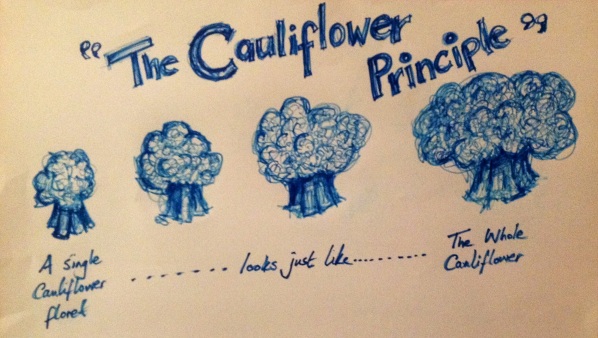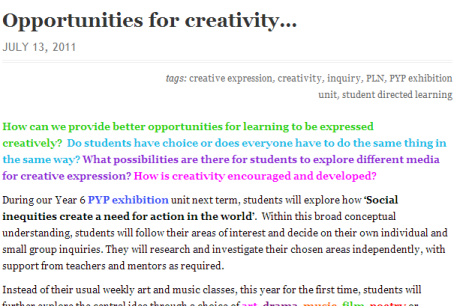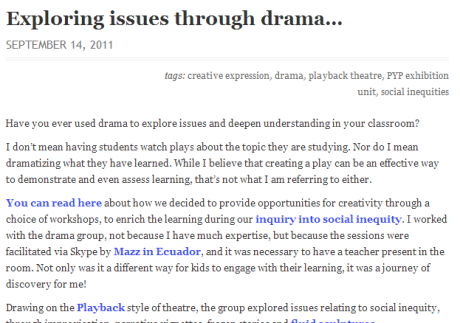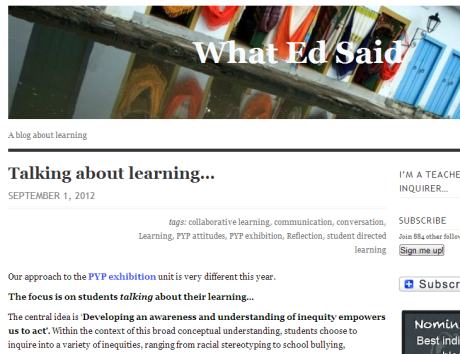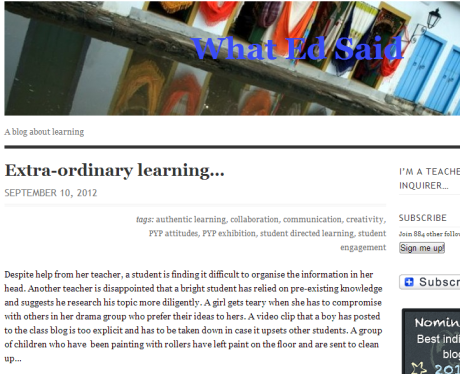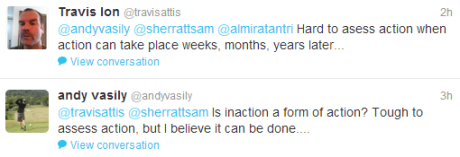Students have been working on making choices and plans of what they need to do in their exhibition. Before they go home students write a “to do” list of the things they are going to work on that night. The next morning they have to prove that they did the things they wrote by showing evidence of their learning. They need to share and show their evidence with 3 other students. Their work is checked and then “sign off” as been completed. A great conversation for students to have to hold them accountable for their learning!
It is crucial that as teachers we find ways to bring in talents, skills and knowledge into the classroom. Matt is a fine example of this.
He is in his element right now in the exhibition. He is confident. He is so interested. This is because he is doing something that matters to him. Matt is able to share these strengths and passion with others. As a result he is becoming more confident, revealing skills that may not have come through in other units of inquiry where he did not personally connect with. Teachers need to take the time to notice hidden talents and allow such opportunities to happen. Bring in the things that comes so naturally to them outside of school.
Concentric circles can be used in just about every context and learning experience. This clip shows how concentric circles can be used to identify people in our community. These people are the experts that we can seek out to help guide students and create opportunities that may not have been available to begin with.
It is these people in the community that bring out the best in both teachers and students. When we draw on these skills and knowledge, new exciting pathways emerge and this empowers student learning immediately.
The benefit of this process is that it changes for every unit of inquiry as the knowledge base changes too.
Do you know the people in your community and what they can offer?
These two are designing and building race tracks for model cars, like Hot Wheels. They feel there are not enough “non-sport” options for the kids in the school and that many of them will love racing cars on their tracks. They have been amazingly engaged by their project as they’ve been working on design and construction all year as part of their Passion Project.
Specialist Teachers possess a massive amount of knowledge, expertise and talent that homeroom teachers do not. They can offer students going through an important educational experience like the PYP Exhibition a massive amount of guidance and support. But, how we involve them in the Exhibition seems to cause many of us logistical and philosophical problems in IB schools.
One solution is to “collapse” the regular schedule at some point in the lead up to the Exhibition “staging” – about two or three weeks beforehand seems reasonable. Then, invite Specialist Teachers to come over to the homeroom during their regular, timetabled slot and ask them to focus on students working within their specialist area and, also, to offer support to other students as a regular mentor.
Here is a video showing this model in action. You can see the profound effect this particular teacher has on the direction students are taking.
Just sharing. Your comments welcome!
I was recently asked to elaborate a bit more on the message I often give people to try and keep the staging days of the PYP Exhibition as simple as possible. This part of the whole experience can often completely take over and become a massive, and sometimes meaningless, show.
At NIST, we have tried each year to make the staging as simple as possible. We ask students to try and use only one form of presentation to attract the attention of people and get conversations going. We expect our students to be able to speak knowledgably, passionately and thoughtfully to as many people as possible. This is where they reveal their understanding, where they tell the story of their Exhibition journey, where they reveal the processes they’ve been through and where they discuss next steps.
All of this comes out of their mouths! It is not printed on endless bits of paper. If their Exhibition really comes from the heart, the words will flow very naturally.
Here is a little video to illustrate the point.
When planning a PYP Exhibition, we are faced with a number of options that need to be determined before we hand over to students. Decisions like:
- Will it focus on one particularly transdisciplinary theme? Who will choose it?
- Will the students be free to select a transdisciplinary theme to focus on themselves?
- Will there be one central idea? Who will write it? Will it be given to the students?
- Will the students write the central idea as a whole group? Will individuals or groups write their own central ideas?
- Will students be presented with lines of inquiry or will they write their own?
- Will students be presented with the assessment tools, such as rubrics or continuums? Who will create them?
- Will students create their own assessment tools?
The answers to all of these questions depend entirely on each individual school as the guidance from the IB is very flexible. Schools need to carefully consider where their students are at by the time they reach the PYP Exhibition, as it should reflect their journey so far and not be a completely new experience. If students have not selected a transdisciplinary theme to focus on before, do they need to do it now? If students have not written central ideas before, do they need to do it now? If students have not written lines of inquiry before, do they need to do it now? If students have not created assessment tools before, do they need to do it now?
My colleague, Glenn Davies, always asks “is it worth it?”, and I advise everyone involved with PYP Exhibitions to make that their mantra in the initial planning stages too.
The PYP Exhibition is all about helping students show how far they have come, not setting as many difficult traps for them as we can! Celi Harper, a participant in the PYP Exhibition workshop in Tokyo recently, said that the PYP Exhibition is a “development of self” and therefore the challenges it offers should also be developmental.
I suggest using a mindset similar to the one in Kevin Bartlett’s “Cauliflower Principle“. Make sure the PYP Exhibition really is just the next step in the development of the students. Don’t overload them with too many tasks that may cause them to resent or fear the experience.
Also, PYP Coordinators should use the “Cauliflower Principle” to make sure students are coming to the PYP Exhibition already prepared for the experience. Each teacher the students have in the years leading up to the PYP Exhibition should see themselves as a crucial factor in that student’s success, even though the Exhibition may be several years in the future!
Effectively bringing in the talents and expertise of specialist subject teachers during the PYP Exhibition can drastically change the whole experience for some or all of the students. However, negotiating and planning becomes exponentially more complex the more adults are involved!
Here are some perspectives on this complex but very valuable issue (click on the image to go to the original posting):
Some participants are curious about how we assess what students have achieved in their PYP Exhibition. This is the rubric we used to guide students last year, and it is not much different from the rubrics we have developed for other units of inquiry.
We try to keep the assessments very simple. This is to avoid adding further stress to students and teachers, and to avoid the trap of teaching to the assessment.
This was Simone Reilly’s response on Twitter. She is happy to share more thoughts on this topic so feel free to contact her using Twitter. I have asked Simone if we can get a copy of the documents from her… so, fingers crossed!
I do agree with Edna. Teachers who are adept at “kidwatching”, know their students and know the curriculum, can take very detailed anecdotal notes just by watching their students go through the process. This is very powerful, and very formative assessment.
Here are those links:
Travis echoes Simone’s approach… and touches on the complexities of assessing action. This is continued here:
